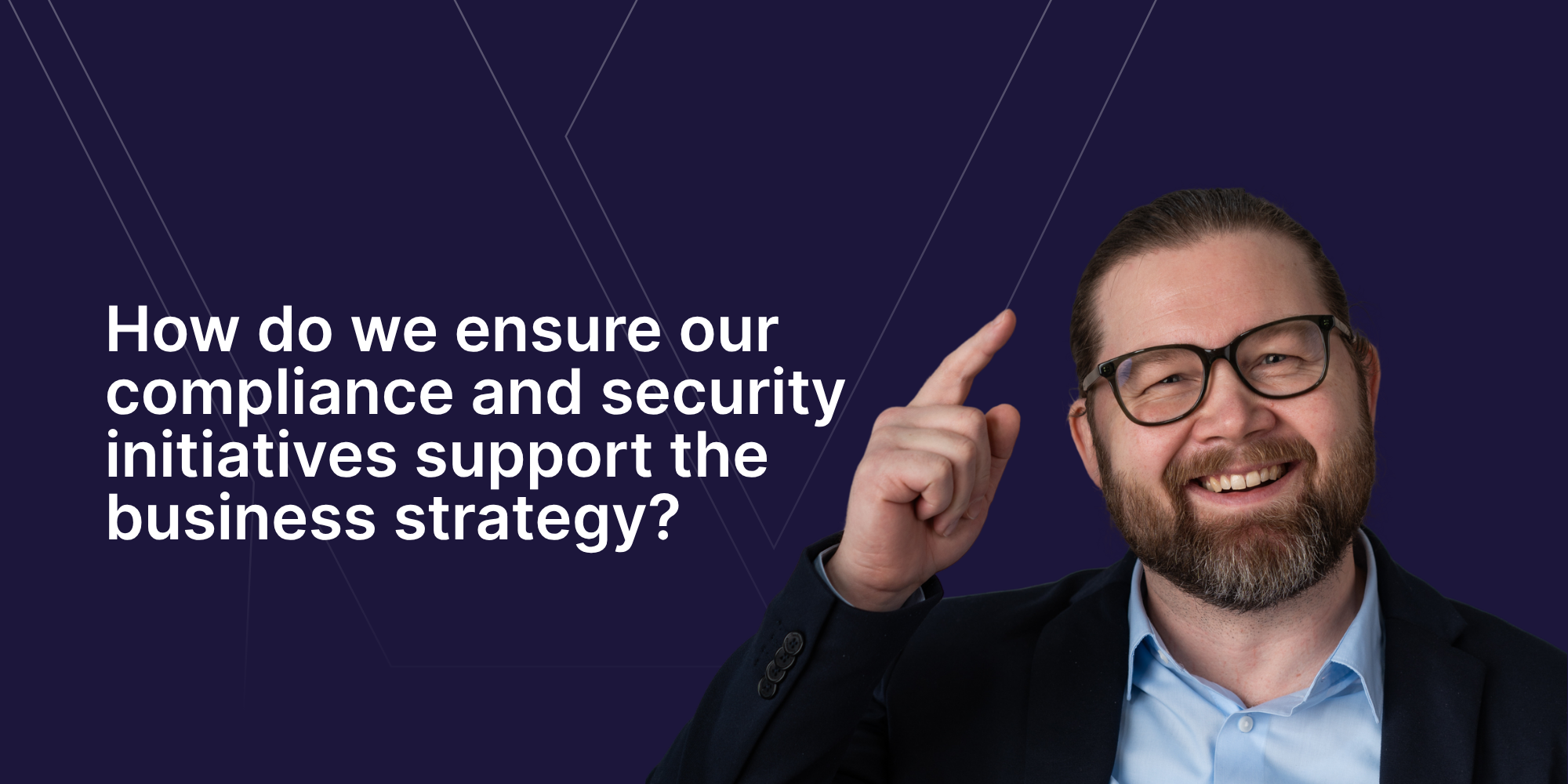3 steps to make GRC, information security and data protection strategic

You want your GRC programme, data protection, and information security efforts to support your business strategy. Here's how to make that happen.
The problem: GRC is seen as a cost centre
When data protection, information security and GRC aren't aligned with the business strategy, these initiatives are often perceived merely as costs. And costs are something organisations naturally try to cut.
This is why many GRC programmes are under-resourced — both financially and in terms of people. Studies have shown that companies across the EU consistently underinvest in cybersecurity.
The solution: align GRC with the business strategy
The solution is straightforward: We need leadership and our colleagues to view GRC, data protection and information security as strategy enablers — tools that help the organisation reach its goals.
But how do we get there?
Here are the 3 essential steps.
Step 1: understand your business strategy
First things first: you need to understand the business strategy. But what exactly is the strategy?
Many organisations have lengthy statements describing their mission, vision and values — but these rarely offer concrete direction.
Instead, focus on the tangible objectives your organisation (and particularly its leadership) is trying to achieve.
This might include:
- Increasing sales
- Entering new markets
- Improving customer satisfaction
- Developing staff skills
In most companies, these concrete goals aren’t clearly documented in one place. That’s why you’ll need to have real conversations across departments and with management to uncover them.
It’s time well spent.
Pro tip: Write these goals down as you go to build a full overview.
Step 2: show how GRC supports the strategy
Next, reflect on how your compliance and risk work contributes to those strategic objectives.
Here are a few examples:
- Support sales efforts: A well-run, well-documented GRC programme builds trust with potential customers. It can help shorten the sales cycle by giving prospects confidence that your organisation takes security seriously. It can also make it easier to pass vendor assessments and enter regulated markets.
- Reduce risk: A centralised view of risks allows you to identify and address them early — which is critical, as most businesses actively aim to avoid operational risks.
- Strengthen credibility: Good information security and data protection don't just impress customers. Investors and other stakeholders increasingly expect sound governance and strong risk management. A mature GRC programme helps demonstrate that.
These are just a few examples. What matters most is aligning your GRC efforts with the specific strategic goals of your organisation.
We're happy to help you identify these connections
Step 3: communication is key
Once you’ve defined how your GRC work supports strategic goals, it’s time to communicate that clearly — to leadership and across the organisation.
The key is structure. Build a rhythm and framework so you can consistently show the results of your GRC programme.
You’ll find inspiration for a communications plan in this masterclass (in English)
It covers:
- How to secure buy-in from leadership
- How to help your entire organisation see the value of information security and data protection
Want more articles like this?
Sign up to our newsletter and get fresh insights, webinars and practical guidance delivered straight to your inbox.


.webp)



.jpg)
